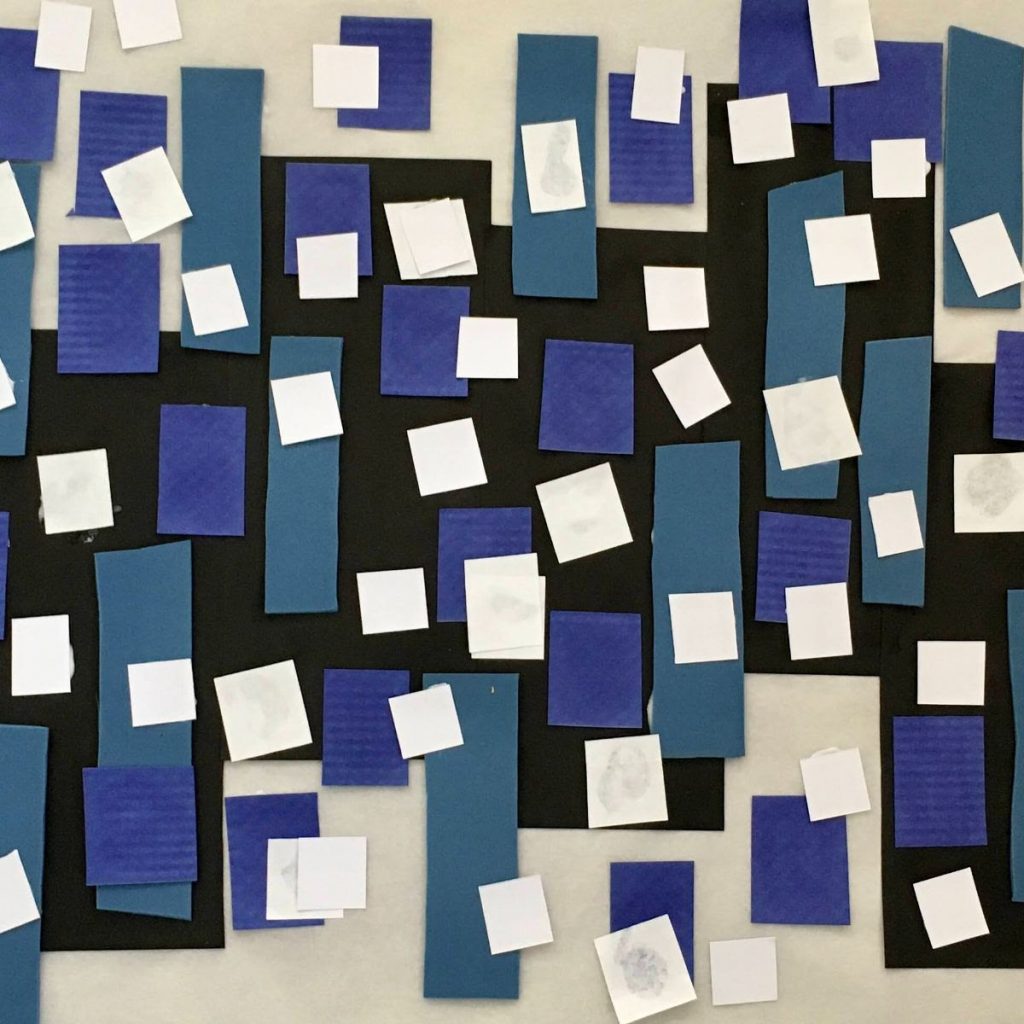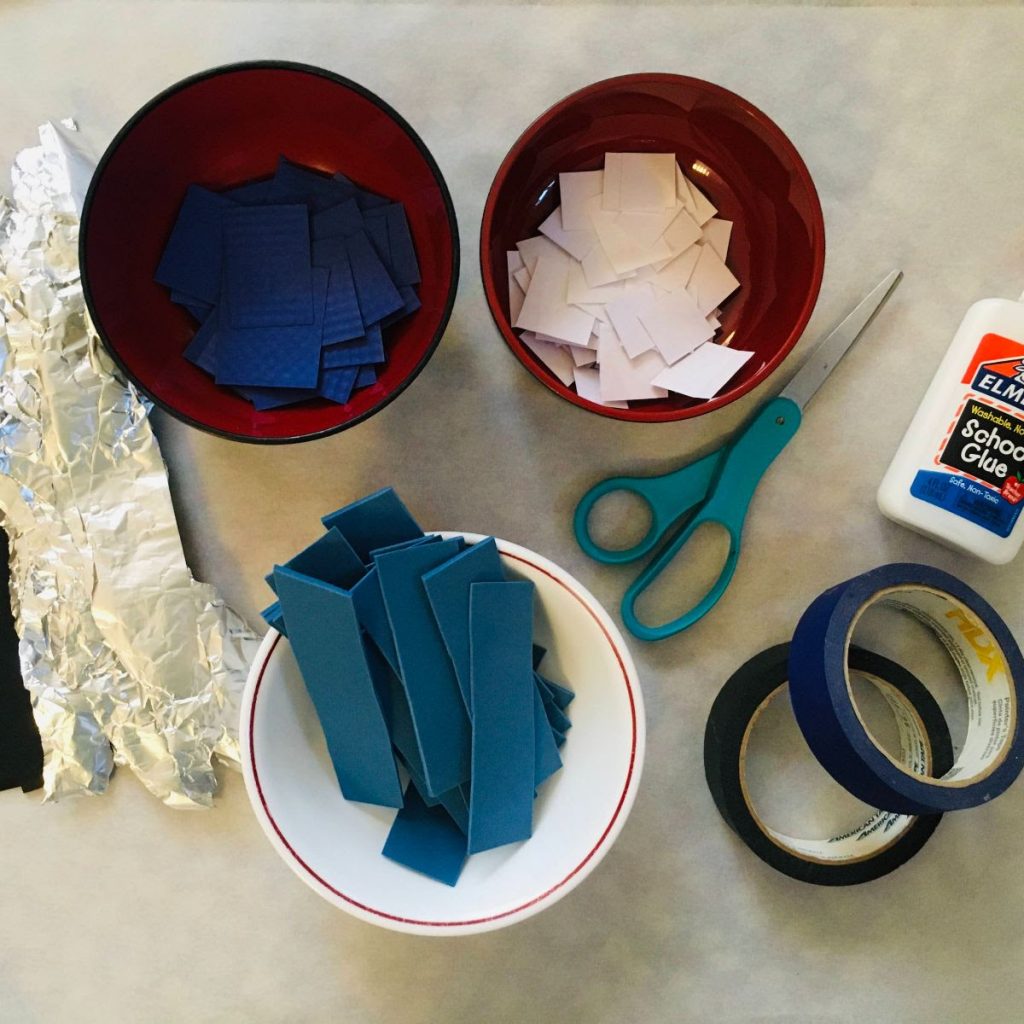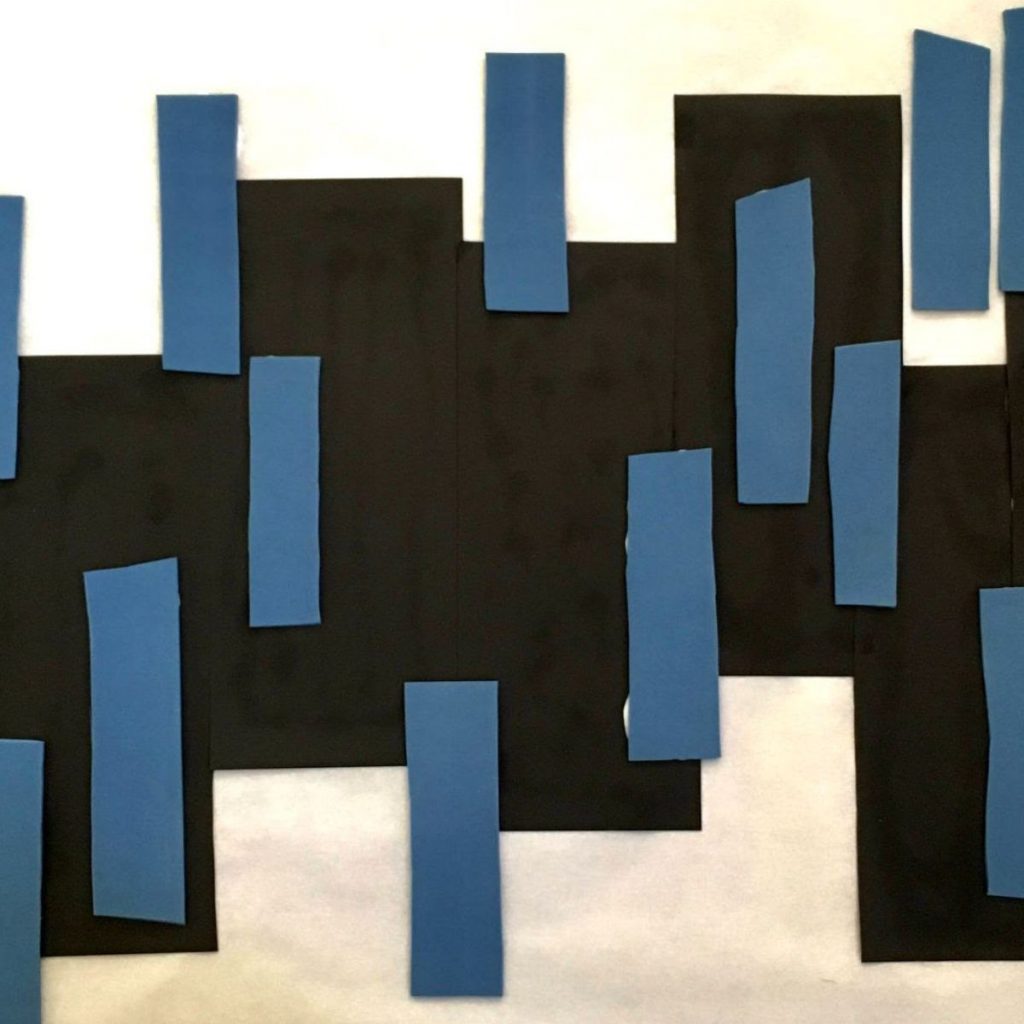
Collaborative art-making is an important practice for children of all ages. Toddlers and preschoolers can focus on the social and artistic process of creating with others. Older children can practice elements of storytelling and making art together with a common goal. Collaborating on art can spark experimentation and discovery, and make cooperation a fun and creative experience.
What We’re Learning & Skills We’re Building
- Creative expression – expressing yourself by creating art
- Collaboration – family members and/or friends working together to create a collage
- Communication – speaking with each other to make creative decisions
- Storytelling – coming up with themes and telling a larger story about the art that’s being made

Materials
- Large piece of roll paper, repurposed gift wrapping paper, or newspaper. (11” x 17” minimum recommended. You can also assemble several sheets of paper and tape them together.)
- Tape (painter’s, duct, and/or Washi)
- Child-safe scissors
- Old magazines (National Geographic, nature, architecture, design or fashion magazines – any with colorful or interesting images works best)
- Torn up construction paper or copy paper of different colors
- Ripped/cut up cereal boxes, greeting cards, old gift wrap, aluminum foil, fabric pieces, ribbon, etc.
- Cups or bowls for glue, and to hold collage materials
- School glue or glue stick
- Paintbrushes
- Washable markers or crayons
- Stickers
- Cutouts from old greeting cards
- Non-toxic, washable tempera paint or poster paint

Creating and Exploring Together
- Help your child cut up paper, tear out magazine images and words, and prepare other materials in any way they see fit.
- Tape a large piece of paper onto a table, a wall, or the floor so it doesn’t slide around too much.
- Get to the collaging! Glue and tape the materials onto the big sheet of paper, make marks and doodles using markers and crayons, and add color with paint. Talk together about the ways you’d both like to decorate the collage.
- Encourage your child to describe their artistic choices – which materials they’re using, which colors they’re choosing, and where they’re placing things. Talk about what, how, and why you’re adding certain things to the collage, too.
- Invite family and friends to add to the collage! When everyone’s done adding materials, leave the collage up to admire, or set it aside and continue working on it later.

Talking with Your Child About Art
- Themes: If you and your child want to come up with a theme for the collage, first ask, “What ideas do you have for a theme?” (Kids often have great ideas that adults don’t think of.) If your child needs help understanding what a theme is, offer suggestions – a story you just read together; places you’ve both been to (beach, forest, city, etc.); colors, shapes, and lines; or fantastical characters and worlds. Regardless of whether you and your child stick to the theme, it’s good practice for communication and storytelling.
- Questions: Ask your child open-ended questions while you’re making art together – “Why did you choose to put sparkly paper in this section?” or “What does it feel like to use a crayon over this bumpy part of the collage?” These questions can foster your child’s critical thinking skills, encourage storytelling, and help to support their creative efforts. Their answers can often be surprising and vividly detailed!
- Feedback: When your child asks for feedback on their artwork, a great way to encourage them is to describe what you see. Compliments like “Beautiful!” or “I love it!” might cause your child to change what they’re doing to try to please you. Instead, try saying something like “I see that you put two circles on the snowman’s face,” or “I noticed that you added a different color to this area. Tell me more about your choice.” These are more likely to let your child continue on their own artistic track. And about your own artwork, try not to ask, “Do you like it?” or “Isn’t it pretty?” either.
(Disclaimer: This page contains Amazon affiliate links. If you make a purchase from one of the links, Habitot will earn a small commission at no extra cost to you.)

